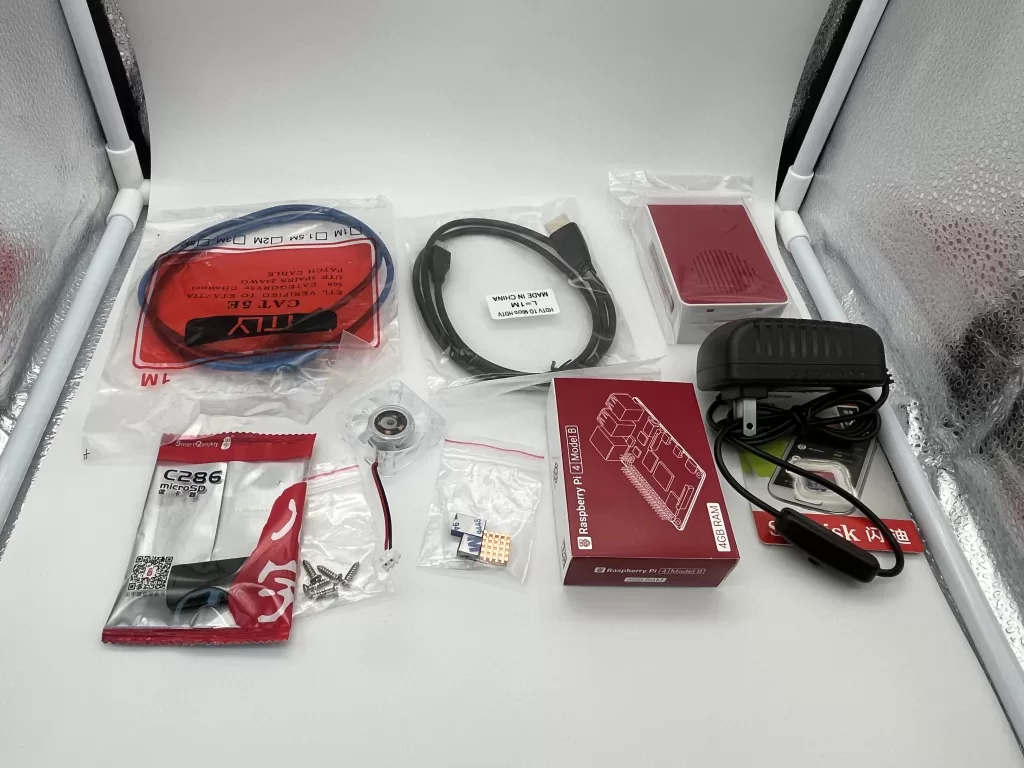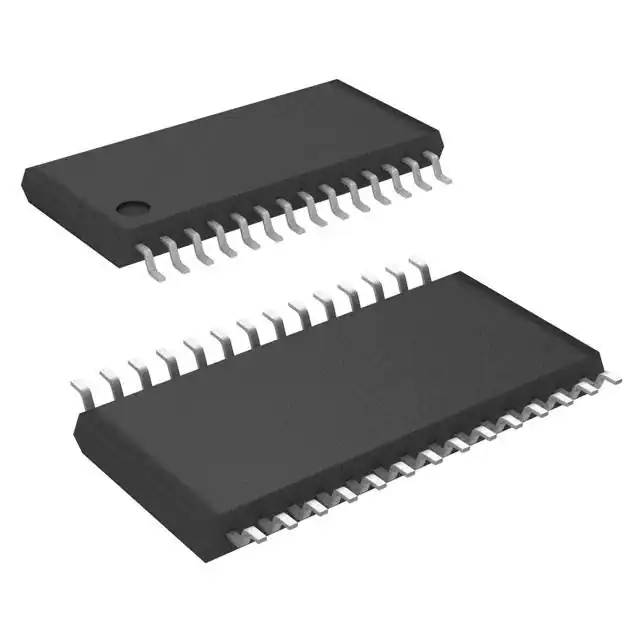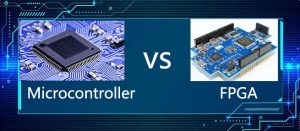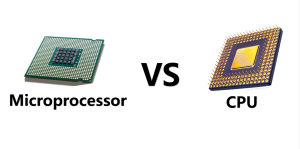This article is going to talk about the detailed information about FPGA and Microcontroller, and interpret the differences of applications, Charact...
View detailsUnderstanding the CMOS Technology
CMOS technology is essential in modern electronics, powering everyday products like smartphones, laptops, and home appliances. This blog explores CMOS logic gates, including Inverters, NAND Gates, and NOR Gates, providing a comprehensive understanding of this crucial element- CMOS technology.
CMOS technology has become a crucial element of our lives in the digital age, powering the products we use every day. CMOS technology is widely used in modern electronics, ranging from smartphones and laptops to home appliances and automobiles, particularly in FPGAs. In this blog, we will delve deeper into the world of CMOS technology, exploring what it is and CMOS logic gates like CMOS Inverters, CMOS NAND Gates, and CMOS NOR Gates which provide a comprehensive understanding of CMOS technology.
What is CMOS?
CMOS technology is a type of semiconductor technology used in the manufacture of integrated circuits (ICs). It stands for Complementary Metal-Oxide-Semiconductor. This technology uses both n-type and p-type metal-oxide-semiconductor field-effect transistors (MOSFETs) in complementary pairs to create digital logic circuits.
In a CMOS circuit, each logic gate is made up of a complementary pair of MOSFETs. One transistor is an n-type MOSFET, and the other is a p-type MOSFET. When the input to the gate is high, one transistor is turned on while the other is turned off, allowing current to flow through the circuit. When the input is low, the opposite happens, and the other transistor is turned on while the first one is turned off.
The complementary nature of CMOS technology allows for very low power consumption. This is because when the circuit is in a stable state, there is no current flowing through it, so power is not consumed. The circuit only draws power when it is switching states, which minimizes power consumption.
What Does CMOS Stand for?
CMOS stands for Complementary Metal-Oxide-Semiconductor Technology. It's a type of semiconductor technology used in the manufacture of integrated circuits, particularly microprocessors, memory chips, and other digital logic circuits.
In a CMOS circuit, transistors create logic gates and other circuit elements. These transistors use both n-type and p-type semiconductor materials, which are arranged in a complementary fashion. This means that for every n-type transistor, there is a corresponding p-type transistor with the same electrical characteristics.
The metal-oxide-semiconductor part of the name refers to the way the transistors are constructed. A layer of oxide is used to insulate the semiconductor material, and a layer of metal is used to make the electrical connections.
The complementary nature of CMOS technology makes it very power-efficient, as the circuit only draws power when it's switching between states. This makes it ideal for use in battery-powered devices and other low-power applications.
Why is CMOS Technology Widely Used?
CMOS technology is used in a wide range of electronic devices and applications in light of the following reasons:
- Low Power Consumption: CMOS technology is known for its low power consumption. This makes it ideal for battery-powered devices and other low-power applications, such as mobile phones, laptops, and other portable devices.
- High Noise Immunity: CMOS technology is also known for its high noise immunity. This means that it can operate reliably in noisy environments without being affected by external interference.
- Fast Switching Speed: CMOS technology allows for faster switching speeds compared to other technologies. This is because the MOSFETs used in CMOS circuits have a very low gate capacitance, which allows them to switch on and off quickly.
- Scalability: CMOS technology is highly scalable, meaning that it can be used to create circuits of different sizes, from very small circuits to very large circuits.
- High Integration Density: The small size of CMOS transistors allows for a high integration density, which means that a large number of transistors can be packed into a small area. This makes CMOS technology ideal for creating complex digital circuits such as microprocessors and memory chips.
- Compatibility with Digital Logic: CMOS technology is compatible with digital logic, which means that it can be used to create digital circuits such as microprocessors, memory chips, and other digital logic circuits. This makes it ideal for use in many different applications, from consumer electronics to industrial control systems.
Overall, the combination of low power consumption, high noise immunity, fast switching speed, scalability, high integration density, and compatibility with digital logic makes CMOS technology a popular choice for a wide range of applications in the electronics industry.
Where is CMOS Technology?
CMOS technology is used in the manufacture of integrated circuits (ICs), which are used in a wide range of electronic devices and applications. CMOS ICs are based on complementary metal-oxide-semiconductor technology, which uses both n-type and p-type metal-oxide-semiconductor field-effect transistors (MOSFETs) in complementary pairs to create digital logic circuits.
We can find that CMOS technology exists in:
Microprocessors: The central processing unit (CPU) of most computers and smartphones is made using CMOS technology.
Memory Chips: CMOS technology is used to create both volatile and non-volatile memory chips, such as dynamic random-access memory (DRAM), static random-access memory (SRAM), and flash memory.
Digital Signal Processors (DSPs): CMOS technology is used to create DSPs, which are specialized microprocessors used in signal processing applications, such as audio and video processing.
Sensors: CMOS technology is used to create sensors for a wide range of applications, such as digital cameras, mobile phones, and medical devices.
Industrial Control Systems: CMOS technology is used in industrial control systems, such as programmable logic controllers (PLCs), to control and monitor manufacturing processes and other industrial applications.
Consumer Electronics: CMOS technology is used in various consumer electronics, such as televisions, DVD players, and home entertainment systems.
Automotive Electronics: CMOS technology is used in automotive electronics, such as engine control units (ECUs), to control and monitor various functions of a vehicle.
Overall, CMOS technology is used in a wide range of applications where low power consumption, high noise immunity, fast switching speed, scalability, high integration density, and compatibility with digital logic are important.
CMOS Logic gates
CMOS Inverters
A CMOS inverter is a digital logic gate that is used to convert a logic signal from one logic level to the opposite logic level. It is one of the most basic and commonly used CMOS logic gates in digital electronics.

Figure 1 CMOS Inverters
The CMOS inverter is composed of a p-type MOSFET and an n-type MOSFET, which are connected in series between the power supply and the ground. The gate of the p-type MOSFET is connected to the input signal, while the gate of the n-type MOSFET is connected to the complement of the input signal. The output signal is taken from the connection point of the two MOSFETs.
When the input signal is at logic 1 (high), the n-type MOSFET is turned on, creating a low-resistance path to the ground and pulling the output signal to logic 0 (low). At the same time, the p-type MOSFET is turned off, creating a high-resistance path to the power supply and preventing current flow. Conversely, when the input signal is at logic 0 (low), the p-type MOSFET is turned on, creating a low-resistance path to the power supply and pulling the output signal to logic 1 (high). At the same time, the n-type MOSFET is turned off, creating a high-resistance path to the ground and preventing current flow.
CMOS NAND Gates
A CMOS NAND gate is a digital logic gate that is used to perform the logical operation of the NAND function. It is built using CMOS (Complementary Metal-Oxide-Semiconductor) technology, which uses complementary pairs of p-type and n-type MOSFETs (Metal-Oxide-Semiconductor Field-Effect Transistors) to create digital logic circuits.

Figure 2 CMOS NAND Gates
The CMOS NAND gate has two or more inputs and one output. The output of the gate is high (logic 1) only when all of its inputs are low (logic 0). If any of its inputs are high, the output is low (logic 0).
The CMOS NAND gate is constructed from a combination of CMOS inverters and CMOS switches. Each input of the gate is connected to the entrance of a p-type MOSFET and the complement of the input is connected to the gate of an n-type MOSFET. The sources of all of the p-type MOSFETs are connected to the power supply voltage, while the sources of all of the n-type MOSFETs are connected to the ground. The drains of all of the MOSFETs are connected to a common output node.
When all of the inputs are low, all of the p-type MOSFETs are turned on and all of the n-type MOSFETs are turned off. This creates a low-resistance path from the output node to the power supply voltage, and the output is high. When any of the inputs are high, the corresponding p-type MOSFET is turned off and the corresponding n-type MOSFET is turned on. This creates a low-resistance path from the output node to the ground, and the output is low.
The CMOS NAND gate is a fundamental building block of digital electronics, and it is used in a wide range of applications including memory circuits, microprocessors, and many other digital circuits.
CMOS NOR Gates
A CMOS NOR gate is a digital logic gate that is used to perform the logical operation of the NOR function. The CMOS NOR gate has two or more inputs and one output. The output of the gate is low (logic 0) only when all of its inputs are high (logic 1). If any of its inputs are low, the output is high (logic 1).

Figure 3 CMOS NOR Gates
The CMOS NOR gate is constructed from a combination of CMOS inverters and CMOS switches. Each input of the gate is connected to the entrance of an n-type MOSFET and the complement of the input is connected to the gate of a p-type MOSFET. The sources of all of the p-type MOSFETs are connected to the ground, while the sources of all of the n-type MOSFETs are connected to the power supply voltage. The drains of all of the MOSFETs are connected to a common output node.
When all of the inputs are high, all of the n-type MOSFETs are turned on and all of the p-type MOSFETs are turned off. This creates a low-resistance path from the output node to the ground, and the output is low. When any of the inputs are low, the corresponding n-type MOSFET is turned off and the corresponding p-type MOSFET is turned on. This creates a low-resistance path from the output node to the power supply voltage, and the output is high.
Like the CMOS NAND gate, the CMOS NOR gate is a fundamental building block of digital electronics, and it is used in a wide range of applications including memory circuits, microprocessors, and many other digital circuits.
Conclusion
To summarize, CMOS technology has played a crucial role in advancing the electronics industry and has become the backbone of modern digital electronics due to its low power consumption, high noise immunity, scalability, and compatibility with digital logic, making it a popular choice for a wide range of applications. Without CMOS technology, many of the electronic devices and systems we rely on today, such as smartphones, computers, and the internet, would not exist in their current form.
Becky
Becky is a technical writer who are interested in writing some professional and original articles. She spent some time working in some electronic sector, but her main area of interest is the use of AI in edge computing. The rest of the time, she write or program about technology-related articles pertaining to the Internet of Things, GPU computing, LoraWAN, PCB, Machine Learning, Precision Agriculture, Open Electronics, and similar areas.
WEW ALL POSTS BYBecky-
FPGA vs. Microcontroller: Which one is the best? 394
-
HVAC Capacitor Basics: Types, Functions, and Troubleshooting 464
Your heating, ventilation, and air conditioning system needs an HVAC capacitor. The compressor and fan motors are powered by electrical energy that...
View details -
CPLD Basics: Concepts, Architecture, Applications and CPLDs vs FPGAs 629
In this blog, we will discuss the basics of CPLD, including Architecture of CPLD, Applications of CPLD, CPLDs vs FPGAs, and so on.
View details -
What is A Solar Inverter? 243
In this blog, the basic knowledge of solar inverters will be discussed.
View details -
Microprocessors and CPU Comparison: What’s the Difference? 677
Both microprocessors and CPUs are necessary parts of computers. But what are they exactly, and how do they vary? In this blog, we'll go through the...
View details -
Digital Signal Processing (DSP) Tutorial: Using the Fast Fourier Transform Algorithm 495
In this tutorial, we will learn about the basics of DSP and the FFT. We will also see how to use the FFT to process audio signals.
View details
 Ampheo Electronics
Ampheo Electronics






